1919 Motor Transport Corps convoy
description: US Army transcontinental expedition evaluating the state of America's roads
10 results
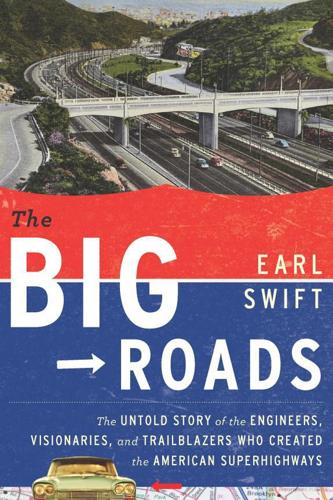
The Big Roads: The Untold Story of the Engineers, Visionaries, and Trailblazers Who Created the American Superhighways
by
Earl Swift
Published 8 Jun 2011
MacDonald replied that he looked forward to working with Joy and was " much interested" in the truck project. " In fact," he added, " if it seemed possible to spend the time necessary, I would feel better prepared to undertake the work at Washington after just such a trip." As it happened, Joy was persuasive—the army did send a convoy of its trucks across the country, from Washington to San Francisco, on the Lincoln Highway that summer. Among the officers assigned to the mission was a young lieutenant colonel named Eisenhower. PART II Connecting the Dots 4 DWIGHT EISENHOWER ENJOYED little promise of a great military future when, in the first days of July 1919, he heard that the army would attempt to drive a train of heavy trucks from the Atlantic to the Pacific; he volunteered to go along as a Tank Corps observer because he had nothing better to do.
…
The trucks had trundled out of Washington after a late-morning ceremony on the Ellipse, just south of the White House and a few blocks from Thomas MacDonald's new office, accompanied by a flock of civilian hangers-on. It took seven hours to reach Frederick, where Eisenhower reported for duty, ready, he admitted later, for a summertime lark. Instead he got " a genuine adventure." The convoy joined the Lincoln Highway in Gettysburg and grunted up its twisting, steeply graded path over the Alleghenies. The greenhorn drivers took the Midwest's rough roads too fast, stripped gears, gunned engines until their radiators boiled over. Breakdowns were frequent. The trucks crushed scores of bridges—fourteen in one day, by Eisenhower's count—which trailing soldiers scrambled to rebuild. But the expedition encountered nothing truly unexpected, and though long hours and summer heat and seemingly unending repairs wore on the men, that held true until the convoy reached the desert southwest of Salt Lake City.
…
And at the point that the system received its first paltry handout, the general was the head of the West's cold war alliance in Europe and not yet a candidate for president. Eisenhower was a lot of things: an officer who never saw time at the front, but who would be remembered as one of history's great commanders; a middling student at West Point who proved himself a genius for organization and planning; a guy who spent most of his career in frustrated, go-nowhere obscurity, only to rise from major to general of the army in eight years. But he was not, by any means, the father of the interstates. Over the years a fable has gained currency that the system was inspired by two events in Eisenhower's life: the 1919 motor convoy expedition, on which the young Ike first grasped the nation's highway shortcomings; and the Allied advance on Berlin in World War II, when he experienced Hitler's autobahns and came to appreciate the promise of modern expressways.
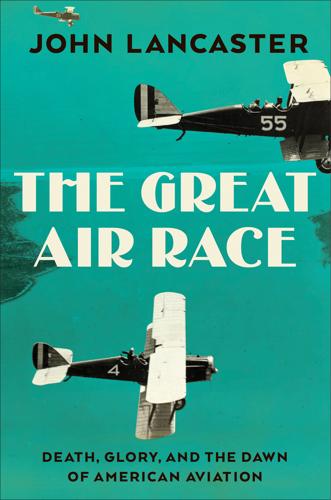
The Great Air Race: Glory, Tragedy, and the Dawn of American Aviation
by
John Lancaster
Published 15 Nov 2022
These widely spaced segments were called “seedling miles” because they presumably would grow into longer paved stretches once motorists came to appreciate their benefits. In the meantime, though, driving the Lincoln Highway was not for the faint of heart—as the Army was among the first to discover. On the morning of July 7, 1919, a convoy of eighty-one military vehicles—trucks, kitchen trailers, touring cars, motorcycles, ambulances, and a massive, tractor-like wrecker called a Militor—rumbled out of downtown Washington, D.C., and snaked along country roads through Maryland to Gettysburg, Pennsylvania. There it joined the Lincoln Highway and set out for San Francisco, led by a white Packard Twin Six driven by the highway association’s chief publicist.
…
The Militor with its mighty power winch more than proved its worth, repeatedly coming to the aid of mired or disabled vehicles—until it, too, broke down for good near Salt Lake City. On the morning of September 6, after sixty-two days on the road, the convoy limped into San Francisco, minus the Militor and five other vehicles. Riding along was a personable young lieutenant colonel from Kansas named Dwight D. Eisenhower, who had been drafted for the journey in part because of his familiarity with tanks. The memory stayed with him. As president in 1956, Eisenhower would sign the bill creating the Interstate Highway System, having learned better than most the value of good roads. As for the Lincoln Highway, it was quickly forgotten, subsumed by the network of numbered state highways—some built with federal funds—that followed the first national highway bill passed by Congress in 1921.
…
Leary, Aerial Pioneers (Washington, DC: Smithsonian Institution Press, 1985), 182. 476.5 million automobiles: Pete Davies, American Road: The Story of an Epic Transcontinental Journey at the Dawn of the Motor Age (New York: Henry Holt, 2002), 1. 47Fisher would lead the way: Davies, American Road, 13. 47Times Square to Lincoln Park … “seedling miles”: Davies, American Road, 13, 29–31. 48eighty-one military vehicles: Davies, American Road, 6, 45. 48“military and economic asset”: Report on the First Transcontinental Motor Convoy, from Lt. E. R. Jackson to Col. L. B. Moody, Tank, Tractor and Trailer Division, Office of the Chief of Ordnance, War Department, October 31, 1919, https://web.archive.org/web/20101206123736/http://www.eisenhower.archives.gov/Research/Digital_Documents/1919Convoy/New%20PDFs/Report%20Jackson%20to%20Moody.pdf. 48barely a year old: Richard Killblane, “70 Years of the Transportation Corps,” U.S.
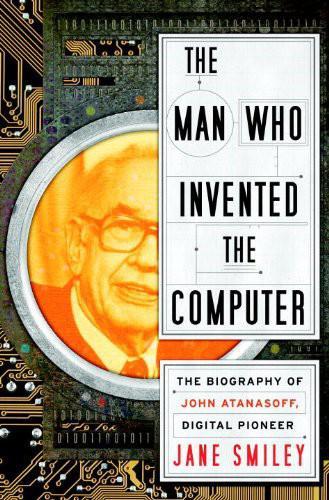
The Man Who Invented the Computer
by
Jane Smiley
Published 18 Oct 2010
He had been attempting to come up with a calculating machine since the early thirties, and he had tried all sorts of ideas. On that night in December 1937, frustrated that his work seemed stalled and baffling, he left his house on Woodland Street after supper and went back to his office in the physics building, but that was no good, either. So he jumped in his new car and headed for the Lincoln Highway—the two-lane road that was the first highway to connect the East Coast with the West Coast (Times Square in New York with Lincoln Park in San Francisco). Atanasoff drove east for some sixty or seventy miles, through the flat prairies of Story County and Marshall County, to Tama, then he turned southeast toward Marengo.
…
A major Allied setback that was not understood until after the war was the fact that the Germans also managed to crack English codes, specifically the code that routed convoys, Naval Cipher No. 3. Even though they did not have the benefit of a machine like the Bombe to do so in real time, they could often figure out the “size, destinations, and departure times,” according to Andrew Roberts, but “instead of recognizing the danger, the Admiralty put the U-boats’ remarkable success in intercepting convoys down to the advanced hydrophone equipment they used … Naval Cipher Code No. 3 was not replaced with No. 5, which the Germans never cracked, until June 1943.”
…
But there were concerns other than weather—principally the question of what the Germans thought the Allies were planning. On June 5, Eisenhower was interrupted in a staff meeting by a courier bringing the first Colossus-decoded German communication from Bletchley Park. Flowers writes, “Hitler had sent Field Marshall Rommel battle orders by radio transmission, which Bletchley Park had decoded with the aid of the new Colossus. Hitler had told Rommel that the invasion of Normandy was imminent, but that this would not be the real invasion. It was a feint to draw the troops away from the channel ports, against which the real invasion would be launched later. Rommel was not to move any troops. Eisenhower read the paper silently, then announced, ‘We go tomorrow.’

The Relentless Revolution: A History of Capitalism
by
Joyce Appleby
Published 22 Dec 2009
As a young lieutenant colonel Eisenhower had participated a generation earlier in the caravan of army vehicles sent across the country to see how easily troops could be moved from the East to the West Coast. “Not very easy” was the answer. The trip took sixty-two days and sometimes required oxen to pull the trucks out of the mud. The new interstate highway system followed the same route, the old Lincoln Highway, as the army convoy of 1919.18 Organized labor became a force in the American economy after passage of the Wagner Act, formally known as the National Labor Relations Act of 1935. This Magna Carta for labor gave statutory protection to organizing workers. Public opinion, as well as court decisions, had begun to turn in labor’s favor, first in the twenties for the right to assemble and then during the Depression for the right to organize.
…
The American Telephone and Telegraph Company ran its own Bell Laboratories, and pharmaceutical companies also maintained first-rate research facilities of their own.28 Three days before he left office, President Dwight Eisenhower warned about the dangers of something he dubbed a military-industrial complex. Calling attention to the permanent war footing of the country and the vastly more complicated weaponry involved, he asked Americans to be alert to “the equal and opposite danger that public policy could itself become the captive of a scientific, technological elite.” After noting that the United States annually spent more on military security than the net income of all U.S. corporations, Eisenhower urged “the proper meshing of the huge industrial and military machinery of defense with our peaceful methods and goals, so that security and liberty might prosper together.29 Only the catchphrase “military-industrial complex” caught on; the warning went pretty much unnoticed.
…
With a toehold on the European continent, Turkey could be considered Europe’s single Muslim country. At war’s end, Germany was a devastated country, on the verge of starvation. Kaiser Wilhelm II had fled to the Netherlands. The successor government, the Weimar Republic, was established in early 1919, if “established” is the right word. It had to struggle for stability against paramilitary socialist groups and the defeated military leaders who longed for the return of the monarchy. Perhaps what happened is best captured in the Theodor Plivier book title The King Goes, the Generals Remain. The Versailles Peace Treaty very much complicated Germany’s recovery by taking away 13 percent of its territory and assigning 10 percent of its population to other countries.
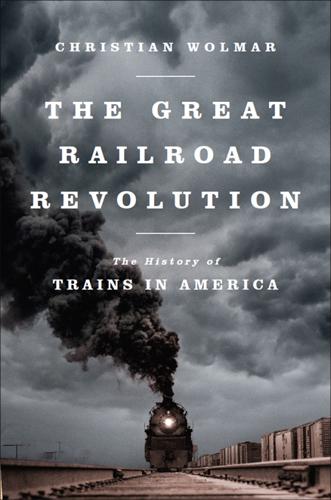
The Great Railroad Revolution
by
Christian Wolmar
Published 9 Jun 2014
At the federal level, little progress was made until 1912, when at last the federal government, under pressure from campaigners within the automotive industry, began to consider building a transcontinental road. In 1919, a military convoy traveled from coast to coast using the partly completed road known as the Lincoln Highway and took sixty days to make the journey. It was led by Lieutenant Colonel Dwight D. Eisenhower, who was so appalled at the poor condition of the roads that, when he was president in the 1950s, he launched the program to build the interstate network that would have such a devastating effect on the railroads (see next chapter). The thirty-three-hundred-mile Lincoln Highway, mostly called US Route 30, was not actually completed until 1923, but support for the project showed that the federal government was at last taking an interest in the issue, despite the fact that the Constitution, as mentioned in Chapter 1, notionally prevented federal funds from being spent on national infrastructure.
…
The Western Maryland was an inadequate single-track line with scrap-iron rails on poor-quality ties and no adequate sidings or even a telegraph system. Haupt quickly drafted four hundred men to improve the line, and consequently it was used to send a series of huge convoys to the front and, crucially, bring back the wounded from what proved to be the bloodiest battle of the war. Rather than allowing a higgledy-piggledy timetable to be run by the military, Haupt established a service of three convoys of trains per day, each consisting of five ten-car sets carrying fifteen hundred tons of supplies, and once the battle commenced, they were used to return to Baltimore with up to four thousand wounded soldiers each.
…
Created by the Federal Aid Highway Act of 1956, the forty-six-thousand-mile system, officially named after Eisenhower, was built over a period of thirty-five years and cost in excess of $425 billion.12 Federal funding was allowed because the system was seen as essential for military purposes and for use at times of national emergencies, and consequently the roads were engineered to very high standards, paid for by a national tax on fuel. It was the biggest construction project in American history and represented a crippling blow to the railroads, especially as road construction has continued to be supported through related highway-funding legislation also enacted by Eisenhower’s administration in 1956.
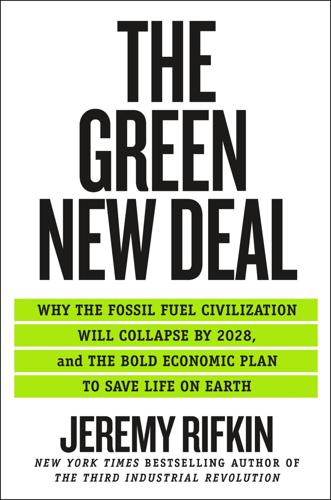
The Green New Deal: Why the Fossil Fuel Civilization Will Collapse by 2028, and the Bold Economic Plan to Save Life on Earth
by
Jeremy Rifkin
Published 9 Sep 2019
Or taking the analogy one step further, KEMA, a former leading European energy, electricity, and engineering consultancy, made the point years ago that the “smart grid is to the electric energy sector what the Internet was to the communications sector and should be viewed and supported on that basis.”12 There is another parallel between the Third Industrial Revolution’s smart digital infrastructure and the Interstate Highway System. President Dwight D. Eisenhower was keen on erecting a vast interstate highway system, in part because of his own personal experience in the military. In 1919, when he was a young colonel in the army, he participated in a motor convoy across the continental United States on the historic Lincoln Highway—at that time the first road across America. The journey was designed to focus attention on improving America’s highways and took over two months to complete. Later, in an autobiography, he quipped that “the trip had been difficult, tiring, and fun,” but the memory of all the delays across the country stayed with him during his military career.
…
Later, in an autobiography, he quipped that “the trip had been difficult, tiring, and fun,” but the memory of all the delays across the country stayed with him during his military career. In World War II, General Eisenhower pondered his earlier experience after observing the German Autobahn—at that time the world’s only national highway system—and later remarked that “the old convoy had started me thinking about good, two-lane highways, but Germany had made me see the wisdom of broader ribbons across the land.”13 When Eisenhower became president in 1953, he already had in mind “the grand plan” for an interstate highway system connecting all of the American economy and society.
…
However, the federal government should take a significant responsibility, along with the states, for financing some of the build-out of the national power grid, which will serve as the backbone of the Third Industrial Revolution infrastructure. There is precedent for this. The backbone of the Second Industrial Revolution infrastructure was the Eisenhower-era National Interstate and Defense Highways Act of 1956. This public works project connected the country, created the suburbs, and established a totally integrated mobility and logistics infrastructure across America. The infrastructure cost the federal government an estimated $425 billion (in 2006 dollars) to lay out thousands of miles of roads over a period of thirty-seven years.10 The federal government covered 90 percent of the financing, paid for by a slight increase in the gasoline tax, and the states covered the remaining 10 percent of the bill.11 The smart national power grid in the twenty-first century, providing seamless digital interconnectivity to enable the sharing of electricity from renewable energy sources across every region of the country, is analogous to the build-out of the Interstate Highway System, which provided a seamless interconnectivity for mobility across the country in the twentieth century.

Turing's Cathedral
by
George Dyson
Published 6 Mar 2012
After basic training in how to keep the ambulances running and the wounded alive, he departed for France in September, where he served at the front lines, attached to the Sixteenth Division of the French infantry, until 1919. The Society of Friends had grown respectable since the time of Charles II and the imprisonment of William Penn. Bound by a humanitarian mission to assist the wounded, combined with Quaker refusal to submit to military authority, the Friends’ Ambulance Unit served with heroic self-discipline during the Great War. Richardson’s convoy, known as Section Sanitaire Anglaise Treize, or S.S.A. 13, reached a full strength of twenty ambulances and forty-five men. Between February 1914 and January 1919 they transported 74,501 patients over 599,410 kilometers of evacuation runs.6 A poor driver but a gifted mechanic, Richardson endeared himself to the rest of the group.
…
The Jones family put up the entire $2 million to match the contribution from the General Education Board, more than enough to realize Veblen’s ambitions for mathematics at Princeton—but Fine began distributing the money to other departments first. Things changed suddenly at the end of 1928. In 1913 the former Lenni Lenape footpath through Princeton had become part of the first transcontinental motorway across the United States. The Lincoln Highway, beginning at Times Square in New York City and terminating at an overlook above Point Lobos in San Francisco, followed the route of the old King’s Highway between Princeton and Kingston, and was fully paved between New York and Philadelphia by 1922. In the late afternoon of December 21, with darkness falling, a driver heading toward Kingston failed to see a seventy-year-old bicyclist making a left turn.
…
Kent, December 7, 1955, in “The Scientific Bases of Weapons,” Journal of the American Ordnance Association (1955): 23; reprinted in Collected Works, vol. 6: Theory of Games, Astrophysics, Hydrodynamics and Meteorology (Oxford: Pergamon Press, 1963), p. 525. 12. Discussion at the 258th Meeting of the National Security Council, Thursday, September 8–15, 1955, Eisenhower Papers, Dwight D. Eisenhower Library, Abilene, Kansas (transcript in NASA Sputnik History Collection). 13. Robert Oppenheimer to James Conant, October 21, 1949, in In the Matter of J. Robert Oppenheimer (Washington, D.C.: Government Printing Office, 1954), p. 243; minutes, Institute for Advanced Study Electronic Computer Project Steering Committee, March 20, 1953, IAS. 14.

Connectography: Mapping the Future of Global Civilization
by
Parag Khanna
Published 18 Apr 2016
As the former World Bank chief economist Justin Lin argues, capital markets, multilateral institutions, and other structural funds should focus on strengthening regional banks so they can finance large-scale infrastructure that creates jobs and connects societies.*6 There is no better example than America’s own Interstate Highway System, ushered in by President Dwight Eisenhower in the 1950s. Having participated in an exhausting cross-country convoy from Washington to San Francisco in 1919 along the degraded, muddy, and potholed Lincoln Highway (America’s first transcontinental road) and then witnessed the advantages of Germany’s sturdy Autobahn highway network during World War II, Eisenhower lobbied the nation to enact a “grand plan” of over sixty-five thousand kilometers of highways at a cost of $25 billion. To this day, it is impossible to imagine America’s modern prosperity without it.*7 The same is true of China.
…
Flows become the solution to problems that frictions alone don’t solve. THE NEW GRAND TRUNK ROAD TO PAX INDICA The Grand Trunk Road is no longer the world’s most majestic road trip. The portion from Kabul to Jalalabad, while now a paved section of Afghanistan’s new highway system, has endured more than a decade of suicide bombers attacking NATO convoys. Heading east from Jalalabad through the spectacular Khyber Pass, one enters Pakistan’s restive tribal areas, where the government is struggling to build roads, power lines, and irrigation canals in a landscape beset by feudal rulers and Taliban insurgents. Another day of driving past the capital, Islamabad, and four hundred kilometers south to the cultural hub of Lahore brings you to the heavily armed Indian border at Wagah, famous for its goose-stepping daily flag-lowering ceremony.
…
Collectively, they belong to the growing ranks of climate refugees—who already outnumber the world’s political refugees—some of whom, such as in Darfur, are double victims of climate change and civil war. Natural disasters and food crises have led the militaries of the U.K., the Philippines, India, Pakistan, and Mexico to reorient their operational training around domestic humanitarian contingencies as well as foreign military ones. Sometimes these are one and the same. In 2014, Brazil launched its largest military exercises: defending the Amazon rain forest from invasion. Militaries are increasingly following America’s example of having substantial disaster response capabilities to support populations in the event of tsunamis, typhoons, earthquakes, and other catastrophes.

Parks Directory of the United States
by
Darren L. Smith
and
Kay Gill
Published 1 Jan 2004
Facilities: Historic site, unmarked 627 9. State Parks ★3242★ EISENHOWER MEMORIAL WAYSIDE PARK Rt 302 Carroll, NH 03598 Web: www.nhstateparks.org/ParksPages/Eisenhower/ Eisenhower.html Phone: 603-323-2087 Size: 0.7 acres. Location: On NH Route 302. Facilities: Picnic tables. Special Features: Park honors President Dwight D. Eisenhower. A short walk leads to views of the Presidential Range in the White Mountain National Forest. PARKS DIRECTORY OF THE UNITED STATES—5th EDITION walking trail. Special Features: This historic military fortification overlooking the Piscataqua River, Atlantic Ocean, and Little Harbor was used as an active fort in every war from the Revolutionary War through World War II.
…
It then runs west through Massac and Pulaski counties, ending at the confluence of the Ohio and Mississippi rivers at Cairo. Time to Allow: 4 hours (Illinois section). ★1168★ LINCOLN HIGHWAY Illinois Lincoln Highway Coalition 200 South State St Belvidere, IL 61008 Web: www.lincolnhwyil.com Phone: 866-455-4249 Length: 179 miles. Designation/Year: National Scenic Byway (2000). Description: The historic byway follows the original alignment of the Lincoln Highway, the first paved, transcontinental highway in the United States. It was the site of the first ‘‘seedling mile’’ of paved roadway, conceived and promoted by Carl Fisher to demonstrate the superiority of pavement over 250 8.
…
Stone Cottage was built for her by Franklin Delano Roosevelt in 1925. The grounds include flower gardens, fields, trails, wooded areas, and a pond. ★102★ EISENHOWER NATIONAL HISTORIC SITE 250 Eisenhower Farm Ln Gettysburg, PA 17325 Web: www.nps.gov/eise/ Phone: 717-338-9114; Fax: 717-338-0821 Size: 690 acres. History: Designated on November 27, 1967; authorized by act of Congress on December 2, 1969. Location: Adjoins Gettysburg National Military Park (see separate entry for description) in southeastern Pennsylvania, 35 miles southwest of York. Facilities: Rest rooms (u), visitor center (u), museum/exhibit, self-guided tour/trail.
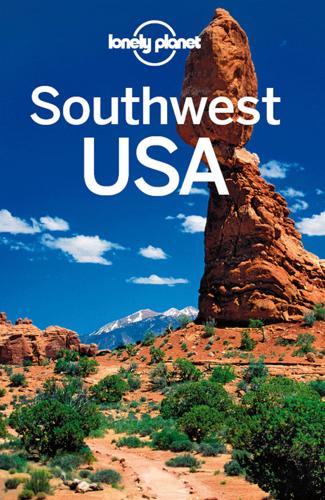
Southwest USA Travel Guide
by
Lonely Planet
Time This trip can be done in a day, but to spend some time exploring the area, allow two to three days. Highway 50: The Loneliest Road Stretching east from Fallon, Nevada, to Great Basin National Park and the Nevada state line, remote Highway 50 follows some of Americas most iconic routes – the Pony Express, the Overland Stagecoach and the Lincoln Highway – across the heart of the state. Why Go? Why would you drive the Loneliest Road in America? As mountaineer George Mallory said about Everest: ‘Because it’s there.’ And yes, Mallory disappeared while attempting the feat, but the lesson still applies. You drive Highway 50 because something might just…happen.
…
Trinitite, a green, glassy substance resulting from the blast, is still radioactive, still scattered around and still must not be touched. Resist the urge to add it to your road-trip rock collection. This desolate area is fittingly called Jornada del Muerto (Journey of Death) and is overshadowed by 8638ft Oscura Peak (Darkness Peak on state maps). Travel to Trinity is permitted only as part of an official convoy. Call the Alamogordo Chamber of Commerce (505-437-6120; www.alamogordo.com) in advance for information. Best Western Desert Aire Motor Inn HOTEL $$ (575-437-2110; www.bestwestern.com; 1021 SWhite Sands Blvd; r from $78; ) Recently remodeled, this chain hotel has standard-issue rooms and suites (some with kitchenettes), along with a sauna and whirlpool.
…
Gallup The mother town on New Mexico’s Mother Road seems stuck in time. Settled in 1881, when the railroad came to town, Gallup had her heyday during the road-tripping 1950s, and many of the dilapidated old hotels, pawn shops and billboards, mixed in with today’s galleries and Native American handicraft stores, haven’t changed much since the Eisenhower administration. Just outside the Navajo Reservation, modern-day Gallup is an interesting mix of Anglos and Native Americans; it’s not unusual to hear people speaking Navajo on their cell phones while buying groceries at the local Walmart. Gallup’s tourism is limited mostly to Route 66 road-trippers and those in search of Native American history.